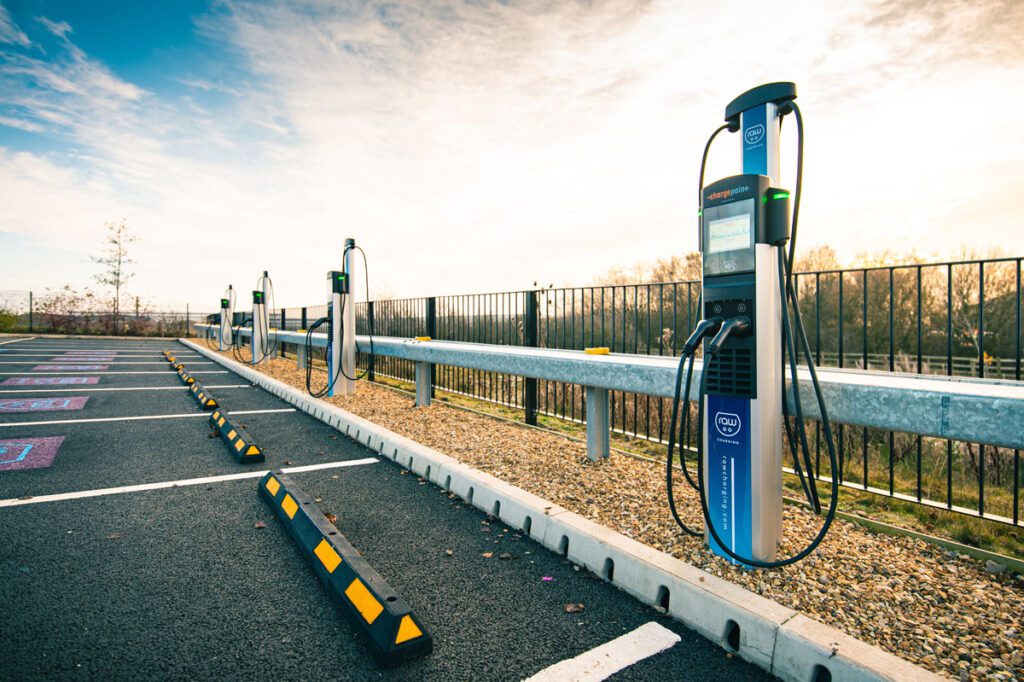As the CEO of RAW Charging and having been a GM in a past life myself, I’ve witnessed the transformative power of electric vehicle (EV) charging in the hospitality sector. The industry is rebounding post-pandemic, and one lasting effect of this global crisis is a heightened awareness of sustainability by both hotel and guest.

However, I often see hotels with good intentions ending up with a charging solution that isn’t fit for purpose today or won’t be tomorrow. Much of the blame rests with the charging industry itself. However, the reality is, it is not that difficult if you focus on one key thing which I’ll get to later. Before that, what to avoid:
- DIY
Assuming you’re a 3* and above hotel with a decent enough number of rooms don’t try and do it yourself. You may think that it’s just a question of getting your electrician to stick a box on a wall, cable it up and you are good to go, box ticked. Think again. You need public charging network grade kit with guaranteed uptimes and 24/7 customer support, seamless payment systems including contactless, tethered cables so guests don’t have to dig around for their cable under their luggage and public mapping integration so guests know that you have the chargers and whether they are occupied on not at any given time.
- ‘We can help you monetise your parking?’
Heard that one before? It has become an EV industry standard for chargepoint operators to give some revenue or profit share to landlord hosts, typically attached to some inflated utilisation numbers showing you how much money you’re going to make over time. Sound good? Well, the inflated numbers are rarely guaranteed and, much more importantly, however much you earn will be nothing compared to your core business of being a hotel so don’t let a few tens of thousands next decade turn your head.
- Faster must be better…
Wrong. It all depends on the use case and for hotels typically 22kW AC or 50DC are more than fit for purpose. These will happily charge most EVs overnight or in a few hours while a guest has lunch, meetings or a round of golf. What are known as Rapid solutions (150kW/300kW) which would charge a car in 30 minutes or so are significantly more expensive, soak up a lot of local grid capacity which you might want for your hotel, and are less environmentally friendly as charging is in the day instead of overnight when there is plenty of cheap energy on the network. If you have a lot of visitors who stay for just an hour or you want to attract passing traffic from a motorway or A road then Rapid might also be relevant but more often than not Fast is just fine.

So, if you manage to dodge the bullets above what should you be thinking about and how do you get it right:
Focus on your guest journey from end to end
The first and last touchpoint at a hotel for an EV driving guest will often be the chargepoints, no longer the reception, so it needs to be a great experience. For every site we work on with a hotel partner RAW maps out the end to end guest journey, understand the EV charging use cases and what is the right solution today and how that might evolve over time. Would guests like to reserve their EV charging once they’ve booked their room or before they travel, is the hotel primarily bed only or are there lots of daytime visitors and facilities, what is the catchment area guests who drive come from, how should we deploy accessible charging bays, what is the right pricing policy, how do we look at chargepoint branding, multi-lingual support and so on.
Equally when you consider your end-to-end guest journey, telling your guest that you think there is a charging place 5-10 minutes down the road isn’t the right guest journey and means they need to leave your nice hotel they are paying for, sit around a car park for 30 minutes often at night when they would probably much prefer being in their room relaxing, working out in the gym or having a drink or dinner downstairs after a long day.
Conclusion
Pick a charge point operator that is dedicated to the hospitality and leisure sector, check out their reference clients, visit their website or give them a call and don’t get distracted by anything other than the guest journey. All being well, within a few months, you’ll have added another important service for your hotel guests and helped everyone do their bit to tackle climate change and reduce air pollution.










